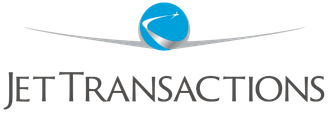Retirement and Charitable Planning with the SECURE 2.0 Act
By John L. Jenkins, AEP®, CFP®, CFF®, BPC
Recently, the SECURE 2.0 Act was announced, which expanded Qualified Charitable Distributions (QCDs) allowing a one-time only QCD of up to $53,000 in 2024 (indexed for inflation) to a split-interest entity. Taxpayers age 70.5 or older can use this provision to fund a Charitable Gift Annuity.
If you are like me, I appreciate when things are broken down into digestible, bite-sized pieces of information that I can easily navigate.
So, let’s start with the basics.
What is a QCD (Qualified Charitable Distribution)?
- A QCD is a direct transfer of funds from your IRA to one or more qualified charities.
Why use a QCD?
- The payment counts toward satisfying your Required Minimum Distribution.
- The IRA distribution is NOT included in income. This could keep your income lower for purposes of calculating taxes on Social Security and Medicare Part B and D premiums,
- Key point: Since most clients cannot itemize deductions, taking a taxable distribution and then making gifts to charities provides no tax benefit. What is even worse is the distribution could increase taxes on Social Security income, increase Medicare premiums, and may trigger the IRMAA penalty. (You know what that is if you’ve triggered it!).
- QCD transfers are only available to IRA owners or beneficiaries age 70.5 and over and are capped at $105,000 (in 2024) per person, per year.
- A QCD to a split-interest entity is capped at $53,000 (in 2024).
What type of IRAs qualify?
- Traditional, Rollover and Inherited IRA, and INACTIVE SEP and SIMPLE IRAs. A QCD cannot be made from any employer plan.
A QCD transfer in excess of your RMD can’t be applied to future RMDs. However, it does decrease the value of the IRA which, in turn, will reduce the amount of future RMDs.
A QCD can satisfy a pledge to a charity without causing a prohibited transaction. However, the donor must receive a written receipt from the charity.
New Split-Interest Gift Opportunity
Here are the basics:
A split-interest entity is a legal entity that allows a donor to receive a benefit during his/her lifetime or for a set term, with the remainder benefiting a charity after the donor’s death.
Qualifying Split-Interest entities include:
- A charitable remainder annuity trust (CRAT);
- A charitable remainder unitrust (CRUT); or
- A charitable gift annuity (CGA)
- Key point: It is unlikely that it would be worth the cost and work to establish a CRAT or CRUT for only $53,000. These trusts are expensive to set up and administer. Using a QCD to fund a CGA is a strategy that may be attractive to many IRA owners.
With a CGA, the charity promises to make lifetime or set term payments to the donor/client. This could be the gift that “keeps on giving.” How does that sound? Make a charitable gift and receive a lifetime income in return…. smart planning if you ask me!
It is also important to note that the income stream is taxable, but the payment is spread out over a number of years vs. a lump sum distribution subject to immediate tax. Another piece of good news is that the $53,000 QCD counts toward your RMD requirement.
As you consider these options, I encourage you to remember that time invested up front, planning and strategizing for your own individual and unique scenario can make a large difference on the back end. Having the right strategy that is personalized to your financial goals and needs can help ensure you are working towards the outcome you desire.
Sources:
https://wealthpreservationinstitute.net/
Disclosures:
The information provided is for educational and informational purposes only and does not constitute investment advice and it should not be relied on as such. It should not be considered a solicitation to buy or an offer to sell a security. It does not take into account any investor’s particular investment objectives, strategies, tax status or investment horizon. You should consult your attorney or tax advisor. This information is general in nature and should not be considered tax advice. Investors should consult with a qualified tax consultant as to their particular situation.
John L. Jenkins of Asset Preservation Strategies, Inc. offers securities through Arete Wealth Management, LLC, a Registered Broker/Dealer Member FINRA/SIPC/NFA. John L. Jenkins offer Advisory services through Axxcess Wealth Management LLC., an SEC Registered Investment Advisor.
Tax services offered through Asset Preservation Strategies, Inc. Asset Preservation Strategies, Inc., Axxcess Wealth Management LLC., and Arete Wealth Management LLC., are unaffiliated. John L. Jenkins, CA Insurance License #0647708.

